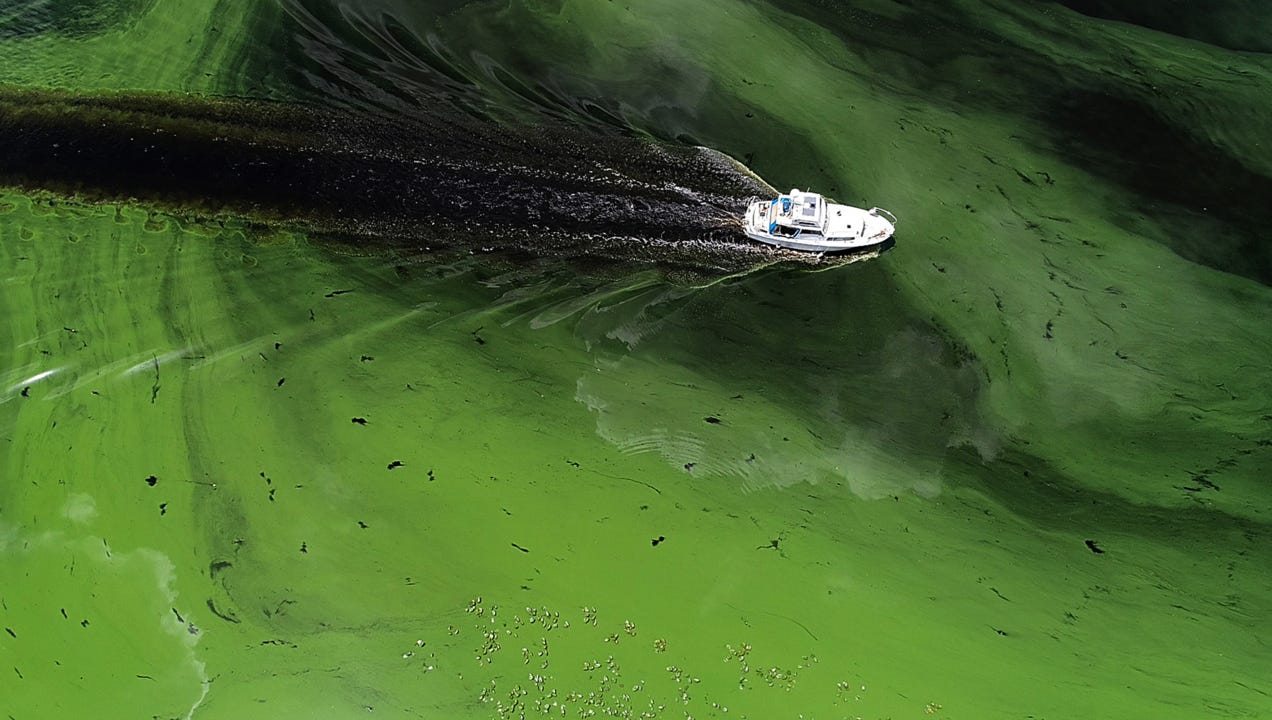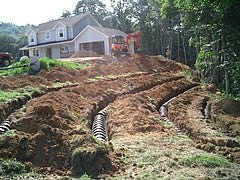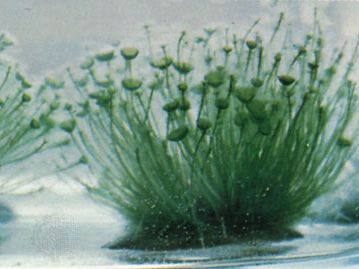Upon the Seas of Algae
Lots of work needed to rid the waters of algae
The title is inspired by Sting’s Fields of Gold. That song is about a man who had broken promises before but kept the promises in his last relationship and found happiness upon the fields of barley. Florida is going to have to make and keep some really big promises if they’re going to clean up the waters that have become so green in the last decade.
The year 2018 was a pivotal year in Florida for the perceived water quality on the blue-green algae front. There had always been some issues with algae cropping up every few years, but usually it didn’t make headlines and went away pretty quickly. But 2018 was different.

What’s an algae bloom and how did it wind up sliming Florida’s biggest lake? This question was originally asked in the Miami Herald but soon most of Florida was asking it. And then the advisories: 4 Swimming Advisories Issued For Miami-Dade Beaches. Florida’s pristine beaches were getting a well-deserved bad name.
The algae hasn’t been bad every year since 2018, but it’s always there. We’ve learned to live with it with due to better practices in the water management districts and other entities. But what caused it and how can we make it stop?

In this article I’m talking about blue-green algae blooms. It’s caused by a number of different bacteria that share a common feature — they have chloroplasts that make energy for the cells, giving the group name cyanobacteria for its green color. Bacteria that causes red tide that affects Florida’s coast are slightly different (no chloroplasts) but they behave in roughly similar ways and need the same conditions to bloom. For simplicity I’ll only refer to the blue-green algae.

So here’s the background. Blue-green algae needs 2 things to get started.
Nutrient Overload: The proliferation of blue-green algae is often spurred by an abundance of essential nutrients, namely nitrogen and phosphorus. These elements can become overly concentrated in water bodies due to runoff from farmland or suburban lawns where fertilizers are used, leakage from septic systems, and discharges from industrial processes. In such nutrient-saturated conditions, blue-green algae can thrive and multiply, leading to significant blooms. In regions like Florida, where agricultural activities and water management are central concerns, understanding and controlling these nutrient sources can be key to preventing or managing blue-green algae outbreaks.
Water Temperature: Warm water temperatures promotes the growth of blue-green. In a subtropical climate like Florida's, the combination of warmth and sunlight can be especially conducive to blue-green algae blooms.
So that’s pretty well it. Warm water and excessive nutrients and we have a problem. The next issue is what is being done to prevent large blooms. The largest source of algae blooms is Lake Okeechobee.
The South Florida Water Management District and the Army Corps of Engineers are responsible for releasing water from Lake Okeechobee as needed. They have a dual mandate. They need to keep the water in Lake Okeechobee in summer to prevent blue-green algae being sent downstream. They also need to make sure to keep the water level low in case a hurricane comes. In 1928 the San Felipe Segundo hurricane overflowed the levee around Lake Okeechobee and killed 2,500 people, wiping out entire towns. That can’t happen again and they’ve done a good job of this over the last few years but the water level of over 15 ft is worrying should a hurricane appear.
So, how do we address the blue-green algae blooms. I started this article hopeful, but a lot of that hope was lost when just estimating the amount of money needed for this job. Three sources of nutrients are mentioned above, industrial processes, fertilizer runoff, and septic systems. I’ll address each in turn.
Industrial processes is the least of the worries. It really doesn’t register in any studies of the output that has been done recently. There was a time when Central Florida had a series of plants making fertilizer with little oversight making this a larger factor. But it’s just not a biggie now.
Fertilizer runoff is relatively large, but it seems to be pretty's well under control from both sources — agriculture and residential lawns. Many cities and counties have been enforcing a ban on lawn fertilizer in summertime and agriculture has been getting better at fertilizer and irrigation methods.
As to septage (a word I learned while reading for this paper, refers to leakage from a septic system) it’s a tougher story. A recent study by Florida Atlantic University study concluded that 79% of the the nutrients in the 156 mile Indian River came from septage. There’s a University of Florida study doing the same study for Tampa Bay that should be out in 2 years.
There are 3 sources of nutrient pollution — industrial, fertilizer and septic tanks. But septic tanks are the dominant source.

This is the depressing part. I had no idea that that 1/3 of all Floridians live in homes that have septic systems. I would have guessed much lower. This is going to be really expensive. The City of Debary in Volusia County is removing 2,300 septic systems and putting people on municipal sewers over the next 20 years at a cost of $50 million. And recently Martin County had to delay for 60 days a plan to move residents to a municipal sewer when residents rebelled at the $12,000 hookup cost and an additional $749 per year for 20 years. And that’s with the state covering half the $24.3 million cost. The cost to bring millions of homes onto municipal sewers is daunting.
One third of all Floridians live in homes with septic systems.
I’ve highlighted the issues around Lake Okeechobee. However this issue is playing out in nearly every lake in Florida. It’s also impacting the springs and rivers.
So, what do we do about the septage problem? The most cost effective interim solution is for every local government to begin an aggressive program of bringing septic systems into current building code, or at least make it uncomfortable to stay outside current code. That would mean some new drain fields and especially it would force replacement of old tanks. Many of Florida’s tanks were installed long before code enforcement was a thing. The old ones are made of steel and have rusted out over the years and spill their contents regularly. Not a fight local governments relish picking, but it would at the very least buy time to implement the right solution to the problem.

But the long game is to get more people on municipal sewage systems, especially those within city limits. That’s a long term project likely to be very expensive and meet considerable blowback from the citizens. But it’s going to have to be done.
I write these pieces mostly for my own education. Sometimes I don’t get to where I understand an issue, but most of time with enough study I can see most of an issue. Then there’s the rare case when I end up thinking that ignorance was bliss. This is a case of the latter.

